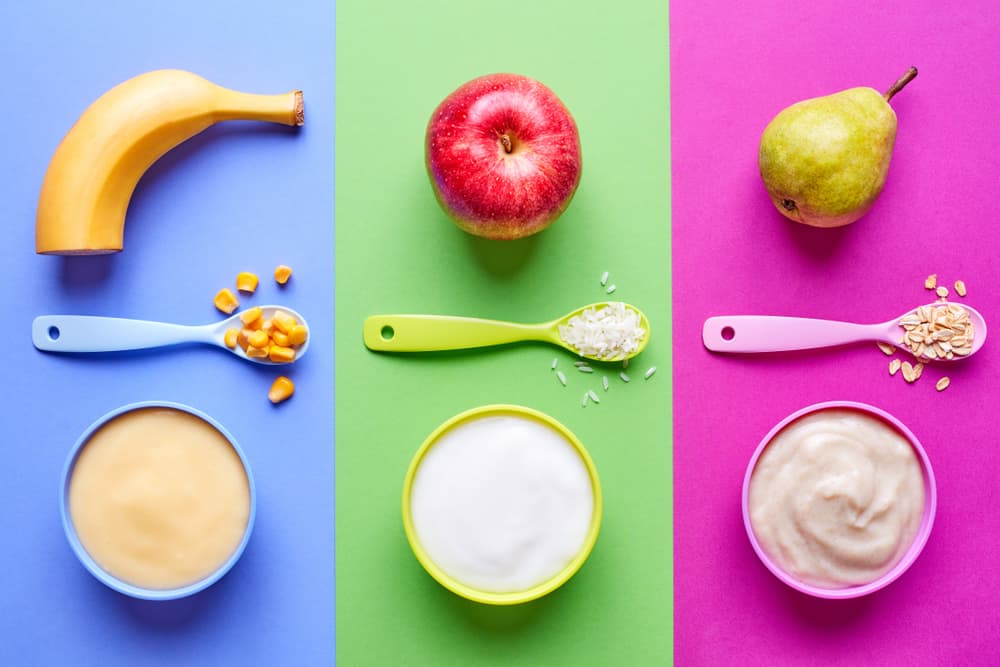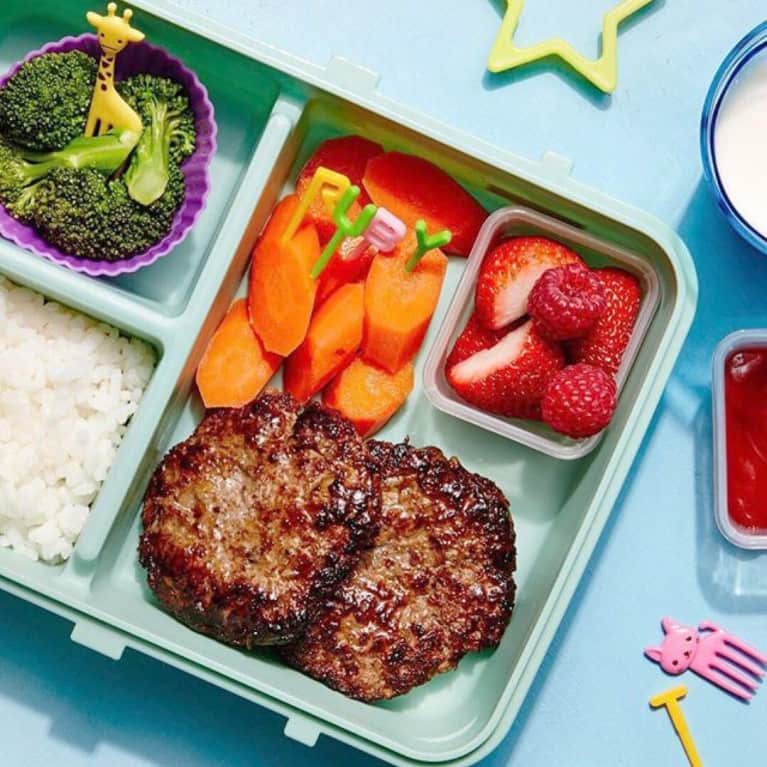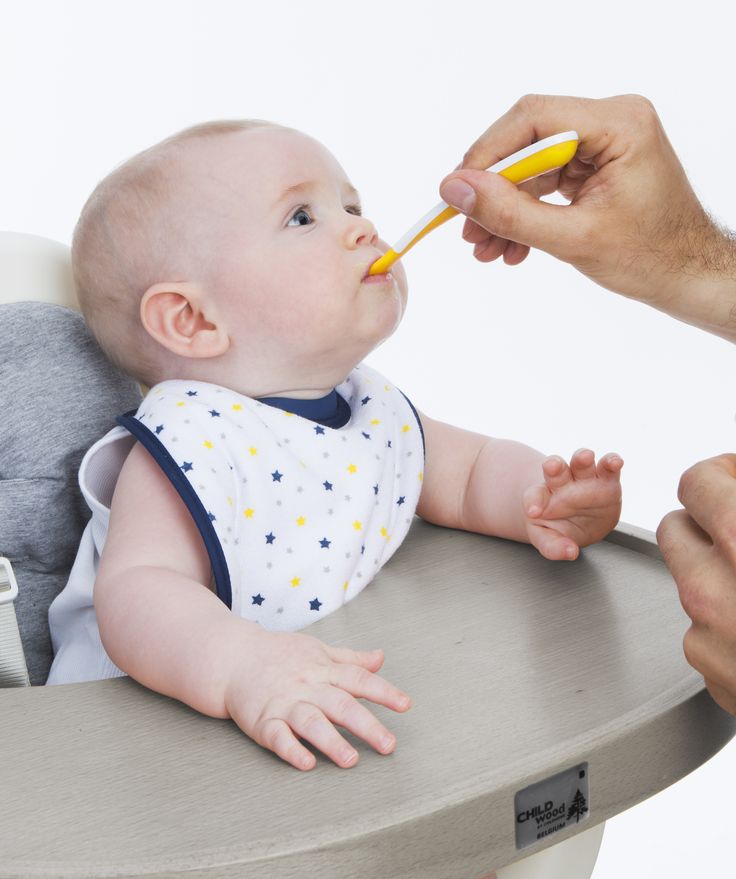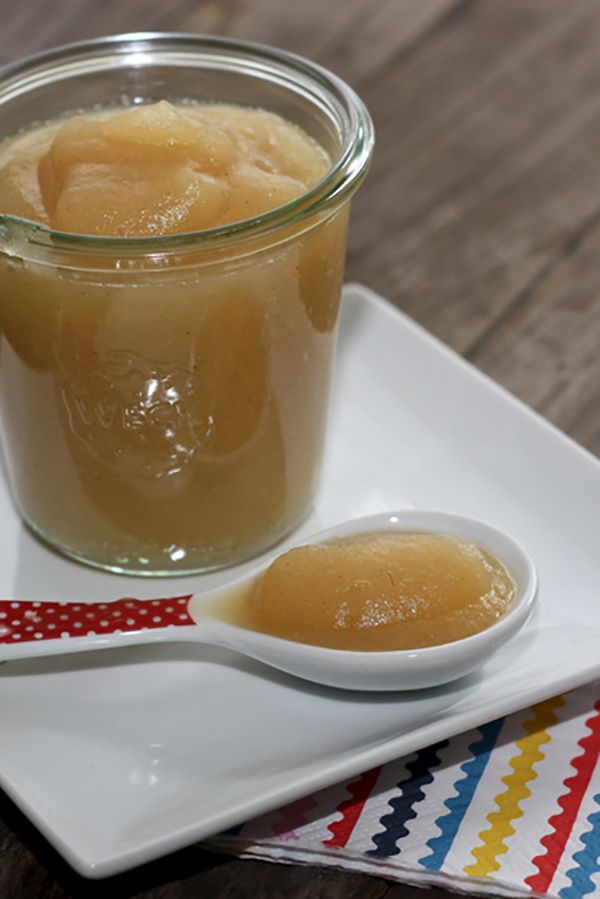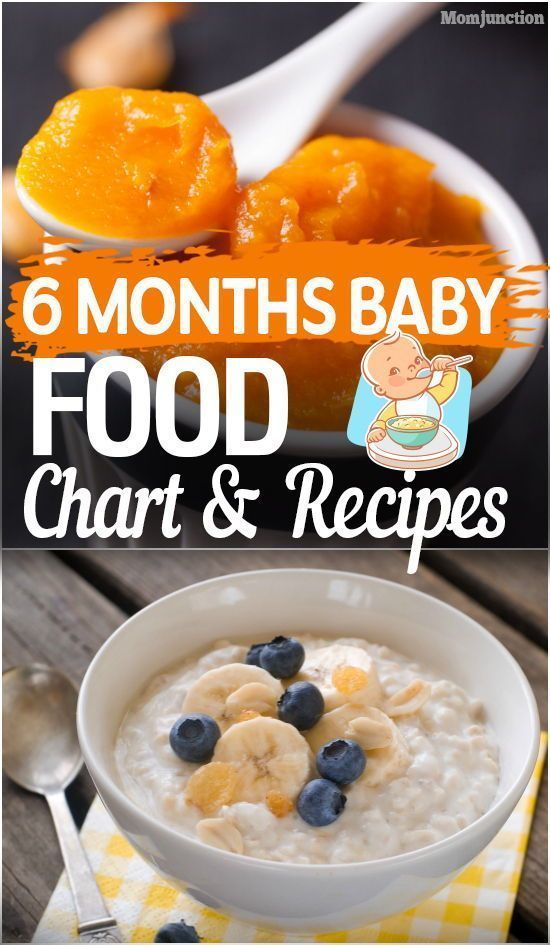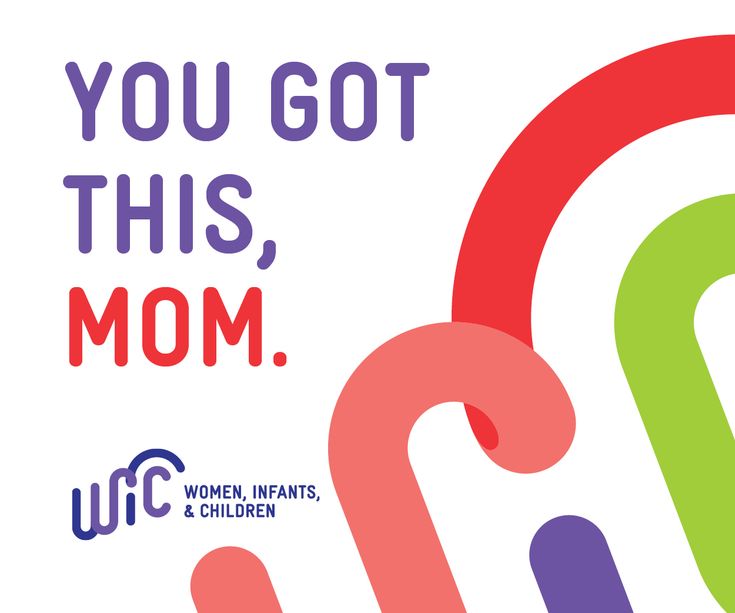Baby feed self spoon
When to Introduce a Spoon to Baby
Learning how to self-feed is an important milestone in your baby’s development. The messy, but fun, process of teaching your baby how to use a spoon will be the next step in your baby’s journey to self-feeding.
Teaching your baby how to self-feed is going to be a messy process, but will be worth it in the long run. Your baby's motor skills and development will benefit from learning how to self-feed so it is important to encourage this process to your baby. As you begin to approach the age where your baby is ready to start learning how to self-feed, here is everything you should consider.
Where To Start
Finger Feeding
Before you start to think about introducing a spoon to your baby, you first will want to make sure your baby has been introduced to finger foods. This first step will help your baby begin to develop their motor skills which are necessary to have before figuring out how to use a spoon.
Beginning with finger foods, start with soft foods that you can easily smash with your fingers. This will be the safest and easiest place to start for your baby. Foods such as soft cooked noodles, cut bananas, or steamed veggies are all a good place to begin. Choosing foods that can be cut up into bigger chunks will also make it easier for your baby to be able to pick up.
If you have only been feeding your baby soft foods and purees on your own, you should wait to introduce a spoon until after you have introduced finger foods. At around 12 months, most babies should be feeding themselves finger foods. It is around this stage that you can start to introduce a spoon.
Next Step: Introducing the Spoon
Now that your baby has gotten comfortable with finger feeding, you can take the next step on the self-feeding journey by introducing their first utensil, a spoon. The CDC recommends waiting to introduce a spoon to your baby until they are around 10-12 months old. However, there is no specific age or time that your baby should developmentally be using a spoon. There are many factors that can have an influence on the timing of your baby learning to use a spoon.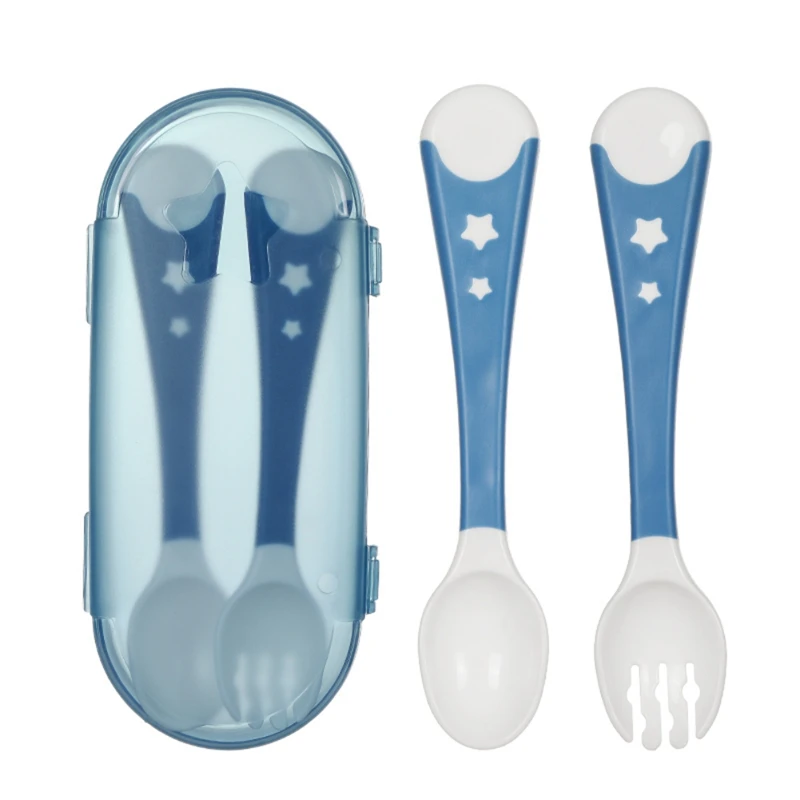
- Fine motor skill development
- Interest in eating independently
- Time they have been eating solid foods
- First introduced to finger foods
These are all factors that can influence when your baby starts to use a spoon to self-feed. Every child is unique so do not worry about whether or not your baby is successfully learning to use a spoon. They will get there eventually!
Signs They Might Be Ready
It can be tricky to know whether or not your baby is ready to take the next step in their development. One sign that your baby is likely ready to start using a spoon on their own is with their body language. Infants typically will turn their heads and clamp their mouth to signal they are full, after the meal. The opposite holds true as they get older. Toddlers will often start to get fussy or throw a tantrum before a meal. If you are noticing that they are appearing disinterested in the spoon you are trying to feed them, let themselves give it a try.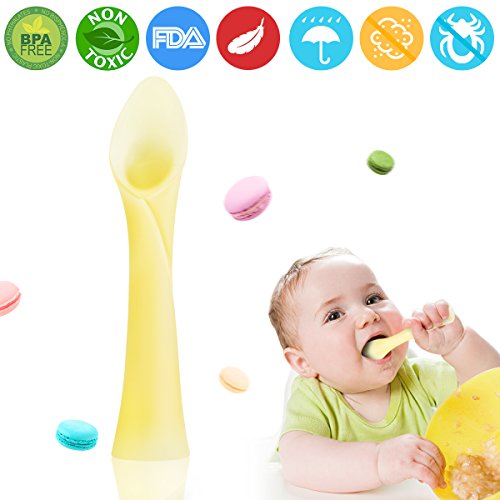 This might be their way of telling you they are ready to be more independent.
This might be their way of telling you they are ready to be more independent.
Learn more from Pediatrician Dr. David Hill from the American Academy of Pediatrics about when your baby is ready for solids:
Expected Timeline
Depending on your baby, these milestones will be reached at different times than the families around you. However, here is a general guide to understanding when you should plan on your baby reaching these steps to independently self-feeding.
- 6 months: You can begin to start introducing finger foods to build your baby’s fine motor skills. Remember to choose foods that are soft and easy to squish to avoid any choking hazards.
- 12 months: Around their first birthday, your baby will likely begin showing an interest in using a spoon themselves.
 This is when you can begin letting your child feed themselves thick, soft foods like oatmeal, yogurt, or applesauce.
This is when you can begin letting your child feed themselves thick, soft foods like oatmeal, yogurt, or applesauce. - 15-22 months: Your toddlers should be able to start getting the hang of feeding themselves with a spoon. Around this time, you should also be able to introduce using a fork to feed themselves.
Every baby is different when it comes to reaching these developmental milestones. You should never focus too much on whether or not your baby is “on track.” With both time and practice, your baby will get there.
What are the Benefits of Self-Feeding?
Self-feeding is your baby’s first step to independence. In addition to the new confidence and sense of freedom your baby is experiencing, self-feeding is beneficial to their overall development in the following ways.
- Learning to grasp and hold things firmly
- Gaining hand-eye coordination (learning spatial awareness, strengthening their “visual motor skills”)
- Refining Sensory Process skills (the different textures and sensations of the food they are touching will help to build their sensory processing skills)
Things to Consider
Picking the Right Spoon
In general, any spoon that is not too heavy for your baby to hold is the right spoon. However, it is probably a good idea to purchase a set of spoons that are actually designed to be used for babies. Look for spoons that have a wide, chubby handle that will make it easy for your baby to grab and pick up. A spoon made of rubber or silicone will also be better for your baby because of the soft texture and grippy material.
However, it is probably a good idea to purchase a set of spoons that are actually designed to be used for babies. Look for spoons that have a wide, chubby handle that will make it easy for your baby to grab and pick up. A spoon made of rubber or silicone will also be better for your baby because of the soft texture and grippy material.
Foods to Start With
Get ready for a big mess when it comes to your baby learning how to use a spoon. At first, your baby will likely spend more time exploring and playing with their food, rather than actually eating it. Start with thick foods that will easily stay on the spoon as they learn how to balance and bring the spoon to their mouth. Here are some recommended foods to start with.
- Applesauce
- Cottage cheese
- Mashed peas/carrots
- Mashed potatoes
- Oatmeal
- Pasta
- Pudding
- Yogurt
Introducing the Fork
So, your baby has now mastered the spoon and is ready for their next big step: the fork. It is usually recommended to introduce the spoon before the fork, because a spoon is typically easier for a baby to learn at first. However, some babies do pick up on the fork easier because it requires less balancing and they can stab the food. You will likely want to introduce the fork at around 16-18 months, to give your baby time to first practice and focus on learning how to use a spoon.
It is usually recommended to introduce the spoon before the fork, because a spoon is typically easier for a baby to learn at first. However, some babies do pick up on the fork easier because it requires less balancing and they can stab the food. You will likely want to introduce the fork at around 16-18 months, to give your baby time to first practice and focus on learning how to use a spoon.
What’s Next?
With so many huge developmental milestones being achieved, your baby is rapidly developing. Once your baby has been introduced to the spoon and fork, you can consider moving them from the high chair to a booster seat at the table. By bringing your baby to the table to eat with you, you can help them develop their motor skills quicker. This gives them the opportunity to observe and mirror your actions.
How Can I Help the Process?
The best way you can help your baby is to simply let them experience and explore this new skill for themselves. At first, you'll probably notice that your baby spends more time playing and waving the spoon around. But eventually, they will start to pick up on how to actually use the tool for their self-feeding benefit.
But eventually, they will start to pick up on how to actually use the tool for their self-feeding benefit.
This is a messy, but fun, process. Look into some rubber or silicone splat mats to make the clean up aftermath easier for you. Other than letting your baby explore and have fun with the learning process, here are some things you can do to help your baby with practicing their new skill.
- Demonstrate it for them: Your baby is looking to you for guidance, so show them how it is done! Have them watch you use a spoon to feed yourself the yogurt or oatmeal and then have them try it for themselves. Over time, they will continue to mirror your actions for how to self-feed.
- Hand-Over-Hand Method: First, let your baby grab for the spoon themselves. Once they are holding the spoon, see if they can dip the spoon and scoop up the food. You can place your hand over their hand and help guide the food into their mouth. Your baby is still learning all the basics like where their mouth even is and how to scoop food using the spoon so you can help show them the ropes for the first few times.

- Stick to Thick Foods: To make it easier for your baby to scoop and bring the food into their mouth, stick to thick foods at first. Avoid foods that can easily fly off the spoon (rice, cereal, etc.) until they have gotten used to the process.
Baby-Led Weaning: What is it?
Baby-Led Weaning is a popular form of teaching self-feeding. The process skips feeding soft foods and purees and goes straight to finger foods starting at around 6 months. Registered dietician, Clancy Cash Harrison, author of Feeding Baby, says “Baby-led weaning supports the development of hand-eye coordination, chewing skills, dexterity, and healthy eating habits,” she says. “It also offers babies an opportunity to explore the taste, texture, aroma, and color of a variety of foods.”
What makes baby-led weaning successful, is that your baby will recognize that in order to eat, they need to learn how to do it themselves. It gives an extra nudge into independence. However, parents can obviously step in when needed, in order to make sure their baby is getting enough nutrition from food.
However, parents can obviously step in when needed, in order to make sure their baby is getting enough nutrition from food.
Starting at about 6 months, or whenever your baby is able to sit unassisted in a high chair, you can begin baby-led weaning. Your baby might not have fully developed their chewing skills so breast milk or formula will still need to be their main source of nutrition until at least 10 months old.
The best foods to begin with are soft, easy to squish foods like bananas, steamed broccoli, or avocado. Try cutting the foods into bigger pieces to make it easier for them to pick up. By starting at 6 months, you will help your baby develop the pincer grasp. When considering foods to start with, texture is key. Since your baby does not have the fully developed chewing skills, you will want to make sure any food you are giving them is very soft to avoid a choking hazard.
If you are thinking of starting baby-led weaning, consider a mixed approach. The first few months of baby-led weaning might be more exploring, and less eating.![]() Do not feel pressure to fully abandon breast milk, formula, or purees. Not all children will be ready for baby-led weaning and finger feeding at 6 months. Focus on making sure your baby is getting enough food, rather than trying to get them to self-feed.
Do not feel pressure to fully abandon breast milk, formula, or purees. Not all children will be ready for baby-led weaning and finger feeding at 6 months. Focus on making sure your baby is getting enough food, rather than trying to get them to self-feed.
The most important thing to take away from both self-feeding and baby-led weaning is to let your baby lead the process. Let them be the one to reach for the spoon, show their curiosity, and explore their growing independence. Your baby will be most successful if you let them guide you in this process.
--------------------------------
All health-related content on this website is for informational purposes only and does not create a doctor-patient relationship. Always seek the advice of your own pediatrician in connection with any questions regarding your baby’s health.
These statements have not been evaluated by the Food and Drug Administration. Products are not intended to diagnose, treat, cure or prevent any disease.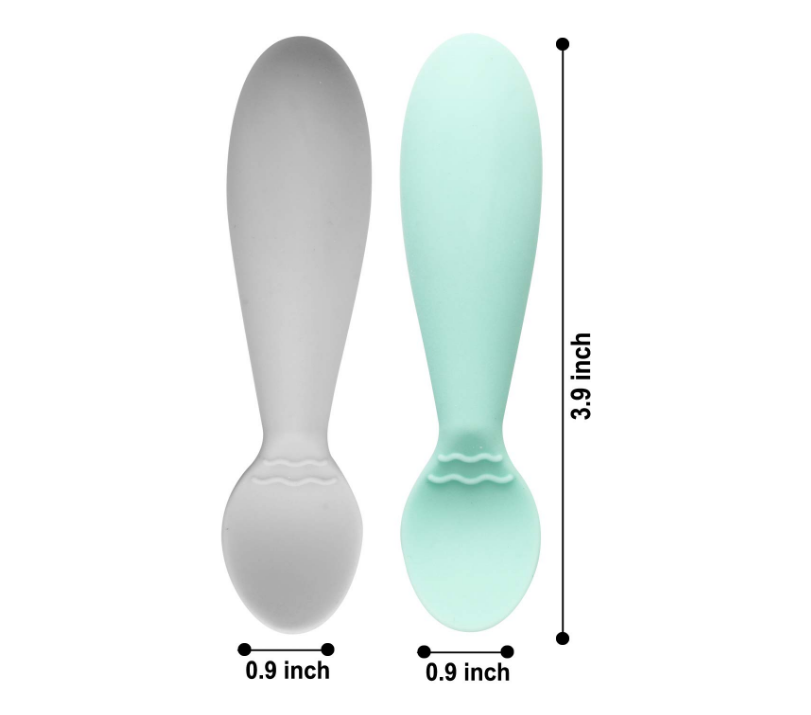
See the FDA Peanut Allergy Qualified Health Claim at the bottom of our homepage.
11 Best Baby Spoons for Self-Feeding (2022 Reviews)
Table of Contents
Updated on by Lyric Fergusson
You know what is super cute (and super helpful during meal time)? Babies feeding themselves! Yes, ok, it can get a bit messy, but it’s all part of the learning process. Besides, now you and your baby can eat together AT THE SAME TIME! Sounds exciting, right? Now, you JUST need the perfect spoon to help your little one achieve this momentous milestone. Remember, it is ok if your baby ends up wearing some (ok, maybe a lot) of their food at first. Eventually, with the right baby spoon and a lot of patience, your baby will get the hang of this!
From silicone spoons to spoons with bamboo handles, here are my top 11 favorite baby spoons for self-feeding:
Best Baby Spoons for Self-Feeding
-
1. Sperric Silicone Baby Spoons for Baby Led Weaning
(Best value — $)
Why it’s great: First of all, these spoons are able to withstand both the dishwasher (think: heat) AND the freezer! “Why the freezer?” you may ask. Well, because this spoon can also be used for baby to chew on, in addition to using it as a feeding utensil. Babies are super curious starting out, not to mention that they are used to chewing and “numming” on things versus eating food from them. This spoon is designed with different teething grooves on the handle that will help soothe your child.
Keep in mind: Some parents have commented that the spoon itself is deep. However, if you find this to be true, some of them mentioned using the other side of the spoon.
Good for: The self-feeder who is around 10-15 months old.
View on Amazon.com ➜
-
2. Munchkin 4 Piece Silicone Trainer Spoon
(Thoughtful design — $)
Why it’s great: This spoon has a guard on it that keeps the spoon from going too far in the mouth and choking your baby, giving your baby the time to master the self-feeding skill. The guard also raises the spoon from resting directly on a table or counter, which reduces the number of potential germs it could come into contact with. This spoon’s handle is also easy for your little one to hold. It is dishwasher safe (always a bonus). Plus, the tip of the spoon is soft enough that it will be gentle on gums should your baby decide to chew on it a bit. This comes in a 4 pack.
Keep in mind: The scoop of this spoon is a bit more shallow than the first spoon. However, this should not affect feeding.
Good for: Little ones learning how to feed themselves.
View on Amazon.com ➜
-
3. GRABEASE First Self-feed Baby Utensils
(Best first utensils — $$$
Why it’s great: These are cute, tiny utensils for cute, tiny hands! The handles are perfect for good gripping and recommended by occupational therapists for building fine and gross motor skills. There is a guard to keep your baby from getting the fork and spoon in too far. You can choose from a variety of colors with this set. It comes with a fork and a spoon. These utensils are also dishwasher safe!
Keep in mind: The fork in this set has rounded prongs, so these are best for younger self-feeders. Although babies over a year are still able to use these utensils as well!
Good for: Early on in the self-feeding process, so order early!
View on Amazon.com ➜
-
4. NumNum Pre-Spoon GOOtensils
(Most versatile — $$)
Why it’s great: There is no wrong way to hold THIS spoon! Honestly, your little one will appreciate this because it will work either way! This comes with two, but they are for the first stage and second stage of learning.
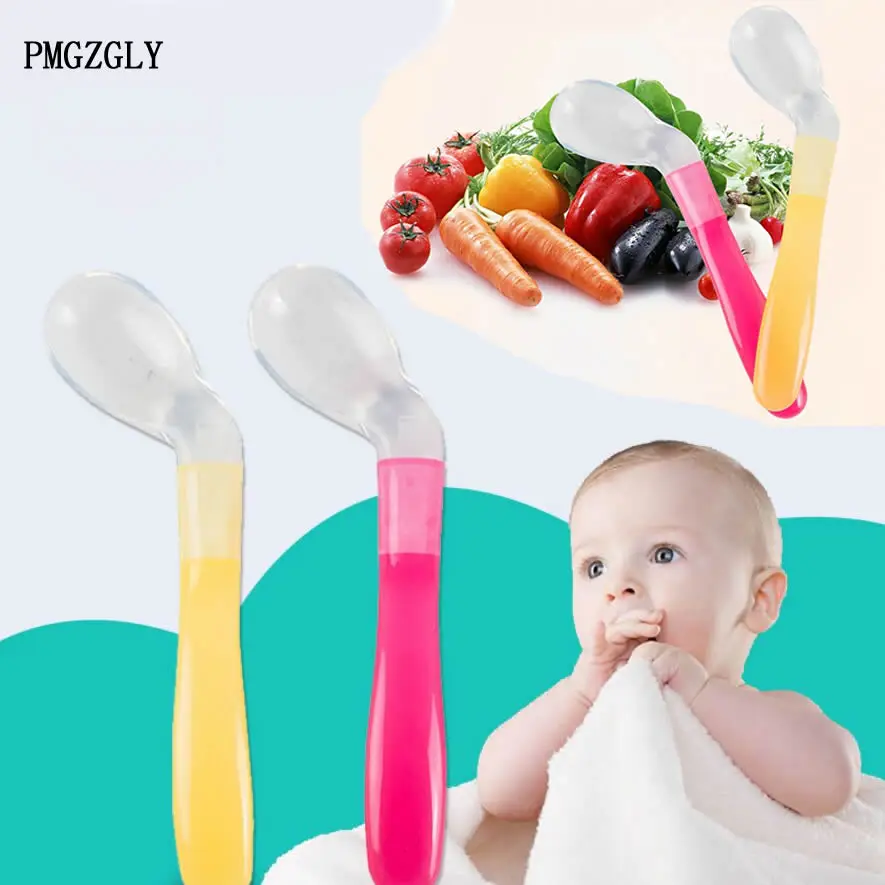 The first stage “pre-spoon” provides a place for your baby to chew on the actual spoon, in addition to using it to feed. This helps the baby get used to holding a spoon, too. The second stage “pre-spoon” has a hole in the middle of the spoon section, which catches more food, including some solids.
The first stage “pre-spoon” provides a place for your baby to chew on the actual spoon, in addition to using it to feed. This helps the baby get used to holding a spoon, too. The second stage “pre-spoon” has a hole in the middle of the spoon section, which catches more food, including some solids.Keep in mind: Even though it is considered a “pre-spoon,” it is not a true teether. Of course, your baby can chew on it at mealtime, but just be sure you are supervising this.
Good for: Improving the chances of your little one getting food to their mouth in the early stages of self-feeding.
View on Amazon.com ➜
-
5. Chewbeads Flatware – 4 Piece Silicone and Stainless Steel Silverware
(Most ergonomic — $$$)
Why it’s great: This set comes with 2 forks and 2 spoons in a variety of fun colors.
 The handles are made of silicone in a beaded shape that’s easy for your baby to grip. They can also be safely chewed on by teething babies and are highly durable. The tines of the fork are just sharp enough to actually learn to stab food, without being dangerous for your child. The spoons and forks are bent, instead of straight at the front, which makes them more ergonomic and helps children keep food on the utensil while it moves from the plate/bowl to their mouth. These utensils are dishwasher, heat, and freezer safe too!
The handles are made of silicone in a beaded shape that’s easy for your baby to grip. They can also be safely chewed on by teething babies and are highly durable. The tines of the fork are just sharp enough to actually learn to stab food, without being dangerous for your child. The spoons and forks are bent, instead of straight at the front, which makes them more ergonomic and helps children keep food on the utensil while it moves from the plate/bowl to their mouth. These utensils are dishwasher, heat, and freezer safe too!Keep in mind: These might be a little bulkier than other baby utensils, but still seem to fit fine in drawers.
Good for: Slightly older toddlers that are ready to start using forks to stab their food.
View on Amazon.com ➜
On An Important Side Note… Asher and I (pictured) feel it’s necessary to highlight the value of life insurance for parents with young kids. After extensive research, we discovered that parents can get insured for as little as $10 per month.
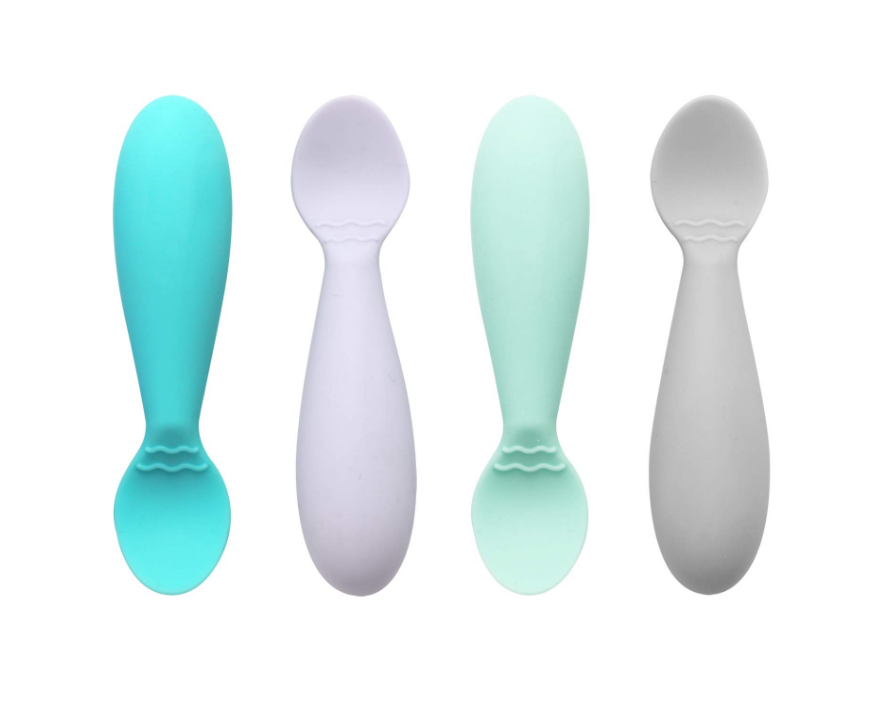 We use Ladder Life who offers coverage up to $3M per parent (without a medical exam, just a few health questions) and you can apply 100% online.
We use Ladder Life who offers coverage up to $3M per parent (without a medical exam, just a few health questions) and you can apply 100% online.Get a quote in less than 30 seconds at LadderLife.com ➜
-
6. Dinneractive Utensil Set for Kids
(Most fun — $$$)
Why it’s great: No more pretending to be an airplane or train to get your child to open their mouth! This spoon and fork set actually have a tractor and loader truck built right on them! They make eating fun and interactive for young toddlers just learning to feed themselves. The handles are soft and easy for small hands to grip. They come in a variety of colors and they are dishwasher and microwave safe. You can even buy them in a set with a matching plate for added fun.
Keep in mind: These are pretty pricey considering you only get one spoon and one fork, but they’re so much fun that most parents said they’re worth it!
Good for: Toddlers that love construction trucks.
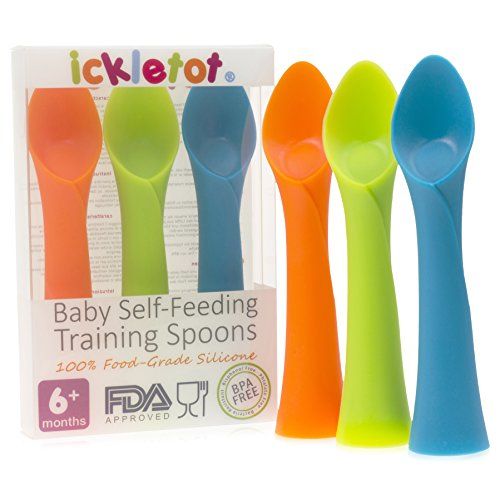
View on Amazon.com ➜
-
7. Qshare Baby Utensils
(Most flexible — $)
Why it’s great: This set of baby utensils is perfect for on the go self-feeding! The set comes with a travel case!! Score! These utensils are bendable, with a wire inside covered by TPE soft glue. If you’re not sure what TPE glue is, it is a soft rubbery material that is strong AND flexible – totally safe for baby’s use! These materials combined (hidden wire and the rubbery material) can allow the utensil to bend either direction 90 degrees. It helps your little one hold it AND get food into their mouth.
Keep in mind: The way that the fork is designed gives it a rounded head. However, this is to keep the fork safer for the baby, while learning to self-feed.
Good for: A beginning self-feeding baby.
View on Amazon.
 com ➜
com ➜ -
8. BabyGaga Baby Spoon and Fork
(Most unique — $)
Why it’s great: This comes in a pack of two and each utensil has a spoon on one side and a fork on the other. They look like cute giraffes and the spots on the back of the spoon stimulate your baby’s tongue, making these cute and functional! The spoon is shallow, making it easy for babies just learning to feed themselves. The fork is unique because it has tines going around in a circle. This makes it easier for your child to stab solid food and really get a hold of it when they’re first learning. They are made of silicone and can be washed in the dishwasher.
Keep in mind: These are better for younger babies just learning to use utensils, as the spoon doesn’t allow them to get a whole lot of food on it.
Good for: Babies that are struggling to get a fork to work.

View on Amazon.com ➜
-
9. Olababy 100% Silicone Soft-Tip Training Spoon for Baby
(Most natural design — $$$)
Why it’s great: This whole spoon is made out of soft silicone, which is perfect for self-feeding babies who also like to chew on their spoons. It has an easy-to-grip handle and is also very flexible. These are not only great little spoons for your self-feeding baby, but the look of it is quite interesting, too. The natural design almost looks like a piece of grass and the flat bottom allows your child to stand this up, keeping the spoon portion off the dirty table.
Keep in mind: The spoon area is fairly small, so these are best for those just learning to feed themselves.
Good for: Babies who are self-feeding because the scoop is flexible and can pick up food in a variety of situations.
View on Amazon.com ➜
-
10. Bambusi Natural Bamboo Baby Spoons
(Most eco-friendly — $$$)
Why it’s great: This is a bright and colorful set of 5 spoons, which will catch the eye of your baby! This set of spoons also makes a wonderful gift to give and receive. These spoons have a 100% bamboo base, which is lightweight and highly durable. Plus, the scoop of the spoon is soft for your baby’s mouth to bite down on and won’t be harmed if they chew on it a little. The spoons have been designed for easy washing (yes, please)!
Keep in mind: The spoon scoop does come off. However, this does take some force (by a grown-up) and makes for easier cleaning. You probably would do this anyway, but please stay with your baby during feeding times – that goes for all utensils/food/highchair safety/etc.
Good for: Traveling for holidays, restaurants, and family get-togethers.
However, they are great for home use, too!
View on Amazon.com ➜
-
11. BABYBJÖRN Baby Spoon and Fork
(Best quality — $$$)
Why it’s great: BABYBJÖRN is a well known brand when it comes to high-quality, durable, and practical baby items. These utensils are no exception. They’re made of plastic and TPE, which allows your child to get a strong, sturdy grip. The handles are thicker, making it easier for young toddlers and babies to hold them. The spoon has just enough depth to scoop up liquid foods and the fork has rounded tines to protect your baby’s mouth. These come in a variety of colors you can choose from and they all have cute little eyes on them.
Keep in mind: These are a little wider than beginner feeders and work better for those that have already started learning to feed themselves.
Good for: Slightly older babies and toddlers that have some practice feeding themselves already.
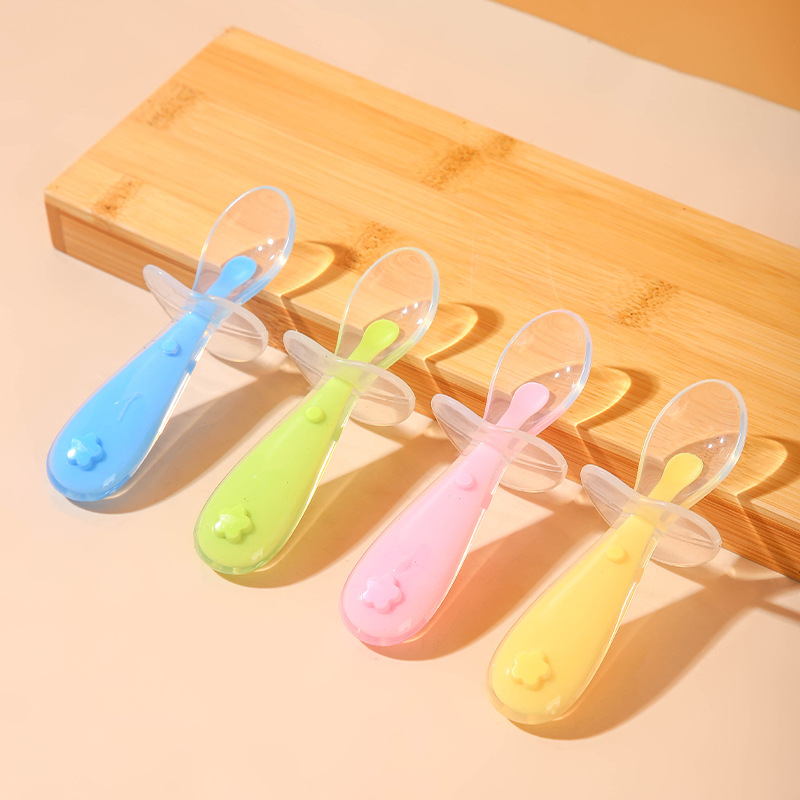
View on Amazon.com ➜
FAQs about best baby spoons for self-feeding
-
1. At what age should I offer a spoon to my baby?
Well, it really depends on your baby because all babies are different. Some babies will learn better by starting out holding one spoon and eating from another. You can then move on to allowing baby to try to feed on their own. Some babies will not be ready to attempt the use of a spoon until around 10-12 months. Try to take cues from your baby.
-
2. How do I teach my baby to use a spoon?
Just try! Trying is the best way to learn! Give your baby a spoon (and maybe a plate or bowl suctioned to the highchair tray if you have it) and let your baby have at it! It will NOT be perfect overnight, but practice will lead to actually doing.
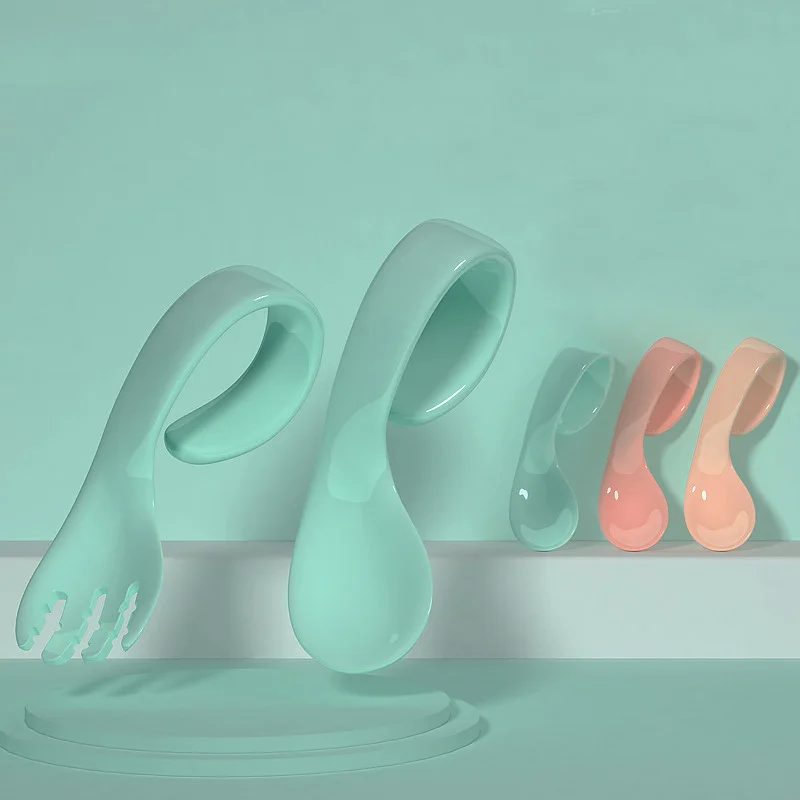 Another good way to teach your babe to use a spoon is to have a family meal. Bring baby’s high chair close to the table, where everyone is eating. Your baby will see everyone else doing it and, even if it’s not right away (more likely than not, it won’t be in the beginning), your baby will pick up on how you are eating and give it a try, too!
Another good way to teach your babe to use a spoon is to have a family meal. Bring baby’s high chair close to the table, where everyone is eating. Your baby will see everyone else doing it and, even if it’s not right away (more likely than not, it won’t be in the beginning), your baby will pick up on how you are eating and give it a try, too! -
3. Why let my baby use a spoon at meal time?
Giving your baby the chance to even just hold a spoon opens up a whole new world for you AND your baby. Once your baby practices (read as: finally gets enough food into that cute little mouth), your baby will have one of the first pieces of independence and YOU may actually get to eat a warm meal! It is a win-win situation.
-
4. What are the key features to consider when buying a spoon for my baby?
You should consider what the spoon is made of.
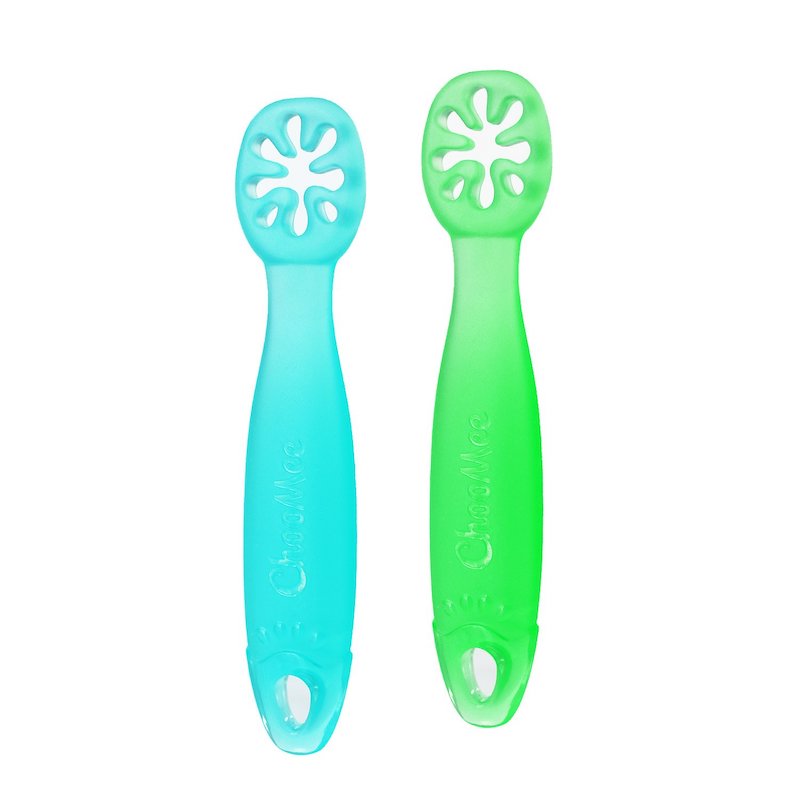 Metal spoons are not recommended for little baby mouths because chewing on them, which most babies do, does not feel very good. You’re looking for soft materials, like silicone or other materials that are gentle on baby gums and teeth. If being dishwasher-safe is important to you, keep an eye out for that. Also, you want the spoons to be BPA-free. Finally, are you looking for spoons with or without a safety guard? Some of them do have this feature, which also may double as a rest to keep the part that goes into your baby’s mouth from lying flat on the table or counter.
Metal spoons are not recommended for little baby mouths because chewing on them, which most babies do, does not feel very good. You’re looking for soft materials, like silicone or other materials that are gentle on baby gums and teeth. If being dishwasher-safe is important to you, keep an eye out for that. Also, you want the spoons to be BPA-free. Finally, are you looking for spoons with or without a safety guard? Some of them do have this feature, which also may double as a rest to keep the part that goes into your baby’s mouth from lying flat on the table or counter. -
5. Can a 9-month-old use a spoon?
The answer to this depends on your baby! All babies are different and will be ready at different times. It never hurts to try, but if your baby incessantly throws it to the floor, you could wait a week and try again. Whatever you do, don’t stop trying! At some point, your baby will be ready, and when that happens, it will be great!
Conclusion
Allowing your baby to learn how to self-feed can be a little intimidating.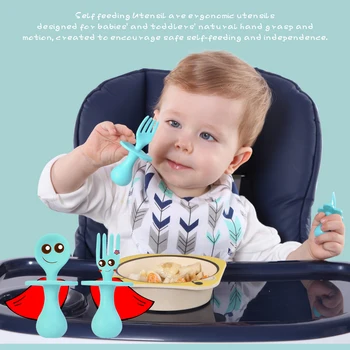 However, not only will the experience help your baby gain a little bit of independence, but it also will enhance your baby’s hand-eye coordination and fine motor skills. Both of those things will help your little one as time goes on! So, think that by giving your baby a spoon at mealtime, you are also setting your babe up for success later in life! To do any of this, though, you need the right self-feeding spoon.
However, not only will the experience help your baby gain a little bit of independence, but it also will enhance your baby’s hand-eye coordination and fine motor skills. Both of those things will help your little one as time goes on! So, think that by giving your baby a spoon at mealtime, you are also setting your babe up for success later in life! To do any of this, though, you need the right self-feeding spoon.
Once you give the spoon to your little sweetie, be patient because this skill does not happen overnight! It takes time, messes, modeling, encouragement, and lots of patience. You and your baby BOTH can do this, though. Now, enjoy this time and take a few pictures because the days are long, but the years are short!
90,000 spoon for feeding in the category "Products for children"Set Silicone spoon for feeding a child Orange and saliva PVC VOL-940 ZZ, Code: 26111373
Delivery in Ukraine
190 UAH 9000.9000 UAH
Buy
Inter no-ka
UAH 3,050
163.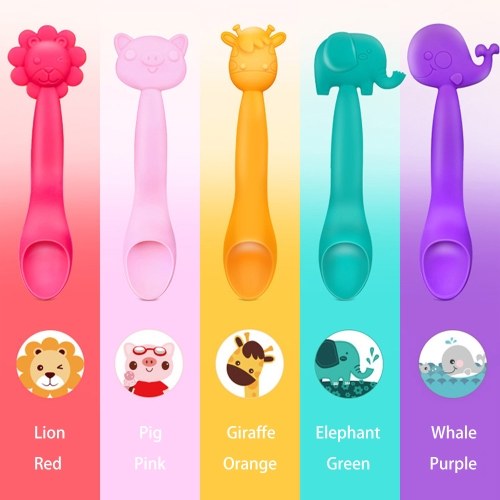 99 UAH
99 UAH
Buy
TOPSALAS - Best Sales
Silicone spoon for feeding a child Ergonomic light green VOL -786 TP, Code: 2460107
Delivery
150 UAH
best sales
Silicone spoon for baby feeding 15.8x2.4 cm Blue vol-904 TP, CODE: 2602521
Ol000 ECO
Silicone spoon for baby feeding Light green and PVC bib vol-941 TE, CODE: 2611377
0003
Internet Catalog of Discounts of Techno ECO
Set Selunavik Silicone Salad + Silicone spoon for feeding a child Ergonomic TE, Code: 2460108
Delivery in Ukraine
230 UAH
158.99 UAH
Buy
Internet Catalogs of Techno ECO
Ergonomic silicone spoon for baby feeding Orange vol-793 TE, CODE: 2460139
0002 Buy
Internet Catalog of Discounts ECO
Silucon spoon for feeding a child Orange and saliva PVC VOL-940 TE, Code: 2611373
Delivery in Ukraine
190 UAH 9000 135.99 UAH
Buy
Internet- discount catalog Techno ECO
Silicone spoon for baby feeding 15.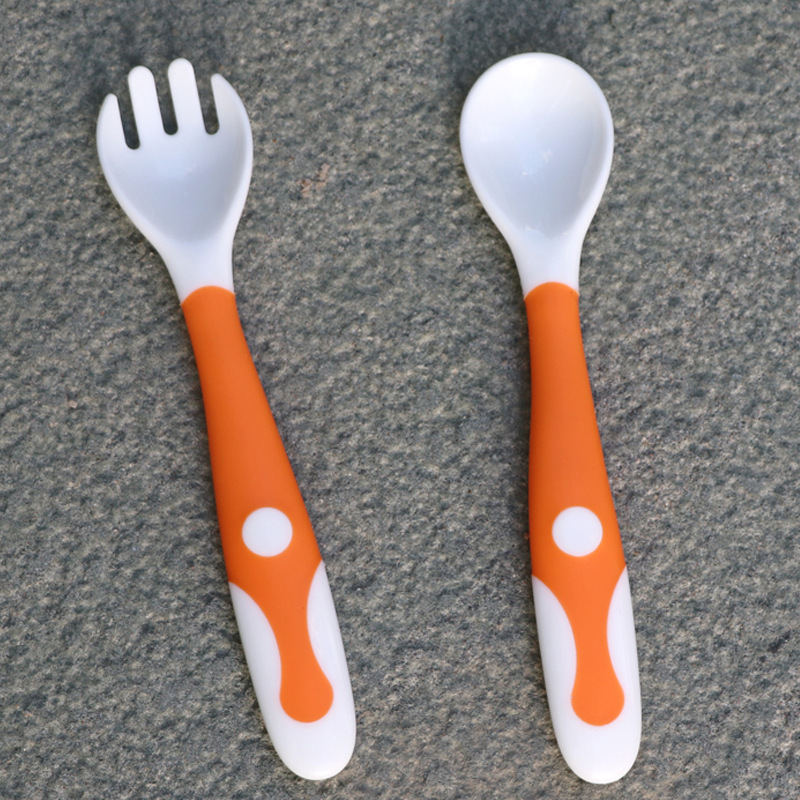 8x2.4 cm Pink vol-905 GM, CODE: 2602615
8x2.4 cm Pink vol-905 GM, CODE: 2602615
0003
Online discount catalog "Hryvna Market"
Hipsit Ergo-backpack kangaroo carrying plate-mat and spoon for feeding Baby Carrier 6 in 1 GM, CODE: 7481750
Buy
Online discount catalog "Hryvna Market"
Bottle-spoon for feeding a newborn VOLRO Orange vol-1337 GM, CODE: 2741250
Delivery across Ukraine
1900 3 UAHUAH
Buy
Internet Catalog of Discounts "Hryvna Market"
Set Silicone spoon for feeding a child Orange and saliva PVC N-940 GM, Code: 2611527
Delivery in Ukraine
9000 150 UAH101.99 UAH
BUY
Online discount catalog "Hryvna Market"
See also
Ergonomic silicone spoon for baby feeding Orange n-793 GM0002 190 UAH
129.99 UAH
Buy
Internet Catalog of Discounts "Hryvna Market"
Slunyavchik Silicon Salad + Silicone spoon Ergonomic BS, Code: 2460108
Delivery in Ukraine
9000 230 UAH 158.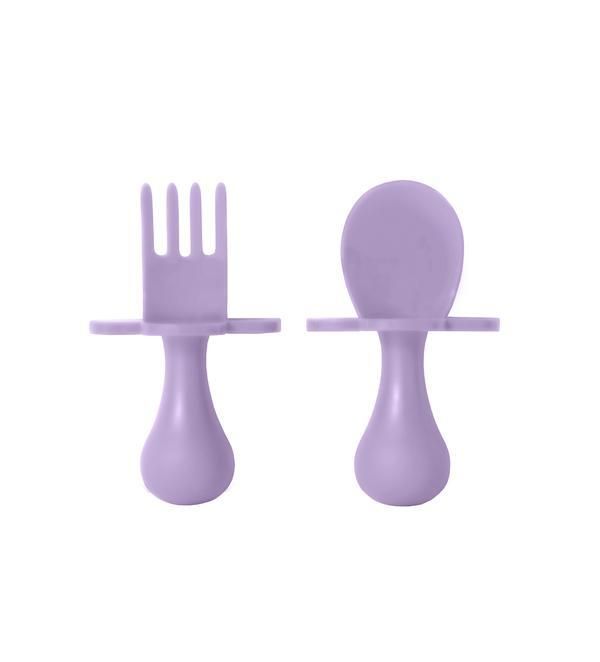 UAH
UAH
Buy
Online discount catalog "BAGSPACE.ua"
Ergonomic silicone spoon for feeding a baby Green n-786 HR, CODE: 2460117
Delivery across Ukraine
UAH 150
UAH 101.99
Buy
Online catalog of ski resorts "HO-RO-SHO!"
Set a hangover for a stroller 35x11x15 cm gray and a bottle-pin for feeding pink n-1 ib, code: 2735057
Delivery in Ukraine
1 030 UAH
719.99 UAH
Buy
Inter. catalog withkidok "iBag.ua"
Silicone spoon set for baby feeding Orange and PVC bib vol-940 IB, CODE: 2611373
Delivery across Ukraine
190 UAH
135.99 UAH
Buy
Internet-catalog with the kit doc "iBag.ua"
Silicone spoon for feeding the baby cm Pink vol-905 EV, CODE: 2602615
Delivery across Ukraine
150 UAH
105.99 UAH
Buy
Eureka! Everything is here!
Set Silicone bib Light green + silicone spoon for baby feeding ergonomic EV, CODE: 2460108
Delivery across Ukraine
230 UAH
158.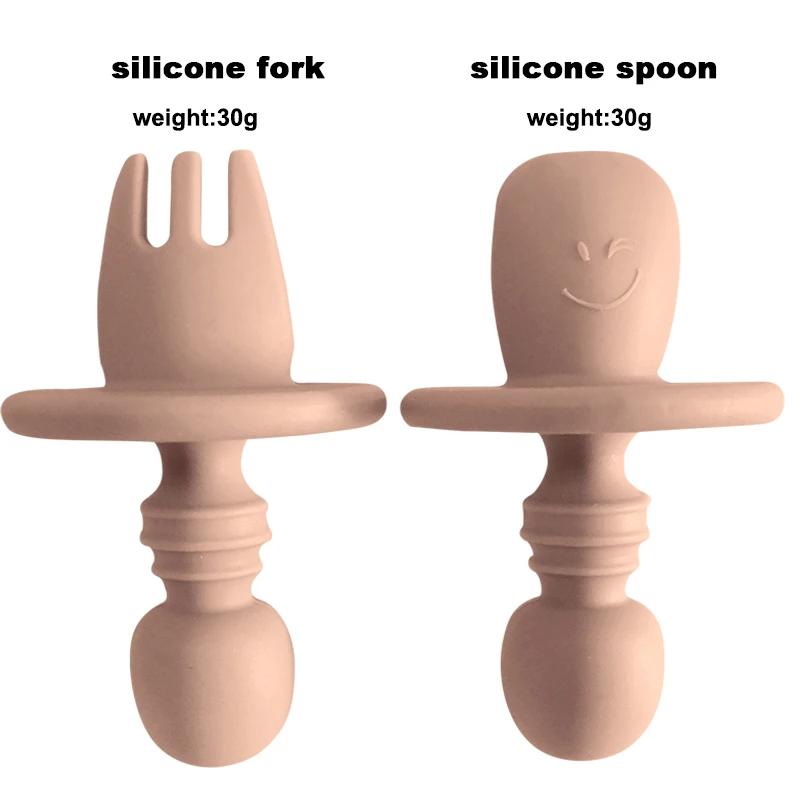 99 UAH
99 UAH
Buy
Eureka! Everything is here!
Silicone spoon for baby feeding 15.8x2.4 cm Pink n-905 EV, CODE: 2611457
Everything is here!
Set Hipsit Ergo-backpack kangaroo carrier silicone plate and spoon for baby feeding EV, CODE: 7465819
Delivery across Ukraine
UAH 2,950
UAH 2,059.99
Buy
Eureka! Everything is here!
Bottle-spoon for feeding a newborn 20 x 5 cm 2Life Pink n-1336 EV, CODE: 6599066
Everything is here!
Silicone spoon for baby feeding Light green and PVC bib vol-941 FE, CODE: 2611377
Delivery across Ukraine
150 UAH
105.99 UAH
Buy
Fifth Element-All you need
Bottle-pin for feeding the newborn Volro rose VOL-1336 Fe, Code: 2741249
Delivery
240 GRN
170.99 uah
Buy
The Fifth Element - everything you need
Hanging bag for stroller 35x11x15 cm Gray and Feeding bottle-spoon Orange v FE, CODE: 2735042
Delivery across Ukraine
1 069 UAH
747.![]() 98 UAH
98 UAH
Buy
Fifth element - all that you need
Silicone spoon for feeding a child Salad and saliva PVC N -941 Fe, Code: 2611568
Delivery
150 UAH UAH
101.99 UAH
Buy
The Fifth Element - everything you need
The first spoon for a child | How to teach a child to eat with a spoon by himself
A spoon is an excellent exercise machine for developing fine motor skills. It's hard to eat with a spoon. You need to be able to hit the right end of the spoon first into the plate, then into the mouth, and even not drop the food. Most babies easily cope with this difficult task after a year. That is why in many books the chapter on introducing the spoon begins with the phrase: "Your child is already a year old, it's time to teach him to eat on his own." Indeed, in a year a child will learn to use a spoon faster, but an earlier acquaintance with it will improve the coordination of the baby's hands. So why waste time?
Your baby will not be able to use a spoon before 7-8 months. First, the baby must learn to sit confidently so as not to stagger (do not swing, do not fall) from each wave of the hand. Secondly, it is more convenient to eat from a full plate, that is, a portion of complementary foods should be large enough.
First, the baby must learn to sit confidently so as not to stagger (do not swing, do not fall) from each wave of the hand. Secondly, it is more convenient to eat from a full plate, that is, a portion of complementary foods should be large enough.
The most convenient product for learning is a thick, viscous porridge. Such porridge can be brought to the mouth even with an inverted spoon. So, as soon as the baby gets used to eating 50-80 grams of porridge, give him a spoon in his hands.
The correct first spoon should be light, made of silicone or food-grade plastic, with a comfortable long handle. You can also use an ordinary tea spoon or a silver spoon donated "for the first tooth", but always with a rounded handle, without sharp corners. A silver spoon must be made of table silver and have an appropriate quality certificate. Keep in mind that some babies don't like the feel of cold metal in their mouths, so it's best to opt for a special baby spoon.
For the first attempts, it is better to choose a small narrow spoon, it fits well in a small mouth.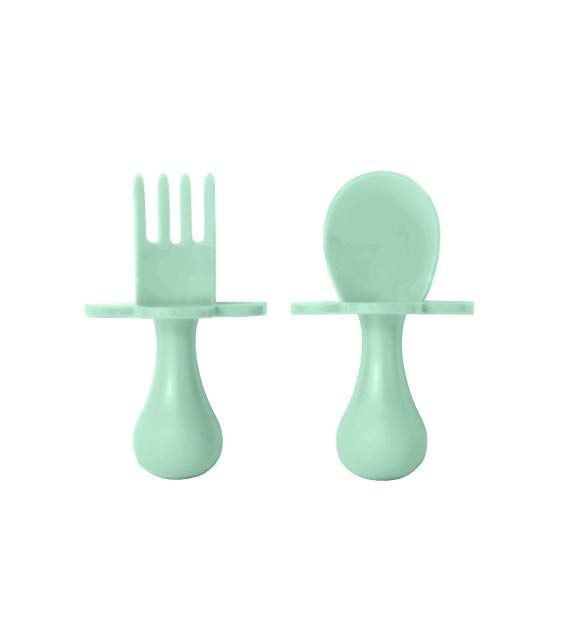 Such a spoon can be bought at any children's store, but the product must be certified. At the same time, in the economic department, get a large piece of oilcloth.
Such a spoon can be bought at any children's store, but the product must be certified. At the same time, in the economic department, get a large piece of oilcloth.
So, put a plate of porridge and give the baby a spoon. It’s good if the baby has managed to get a little hungry by this moment. First, help your child develop the skill correctly. Grab your baby's hand with your hand and together bring the spoon to your mouth. Part of the porridge will definitely end up on the floor, mother and walls. This is fine. The child can get into the plate with both hands and lick the porridge from his hands, lean towards the plate and eat directly from it. Smart children fill the spoon with their free hand. Allow your child these experiments, in no case scold for carelessness! Now the baby is studying, do not interfere with him. After about five minutes, take the second spoon and feed your baby slowly. Each time, give the crumbs more and more time for independent food, so that in a few months he can eat a significant part of the portion himself.
When the child is used to using a spoon, seat him or her at a common table. Toddlers copy the movements of adults, their behavior at the table. So, on the example of the elders, the child will learn accuracy. At about two years old, a child will be able to eat his soup without spilling a drop. In the meantime, be patient.
Of course, it is faster and easier for an adult to feed a child. But if you postpone the process of accustoming to independence for a long time, the baby may refuse to pick up a spoon.
Why strain yourself, because mom or dad will help anyway!.. If this happens, and the child refuses to eat on his own, do not insist. Just be distracted more often by household chores, leaving a plate (the food in it should not be hot!) And a spoon in front of the baby. At some point, a hungry child will not stand it and will take a spoon in his hands. And, of course, it will smear everything around - this is an obligatory stage of development. But the main thing is that the baby develops and learns independence.

